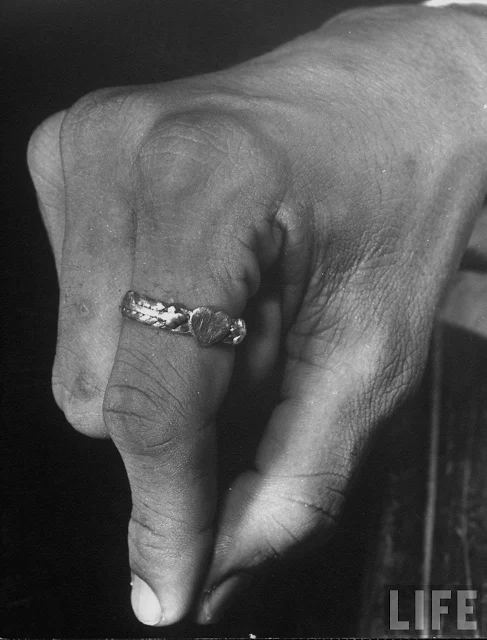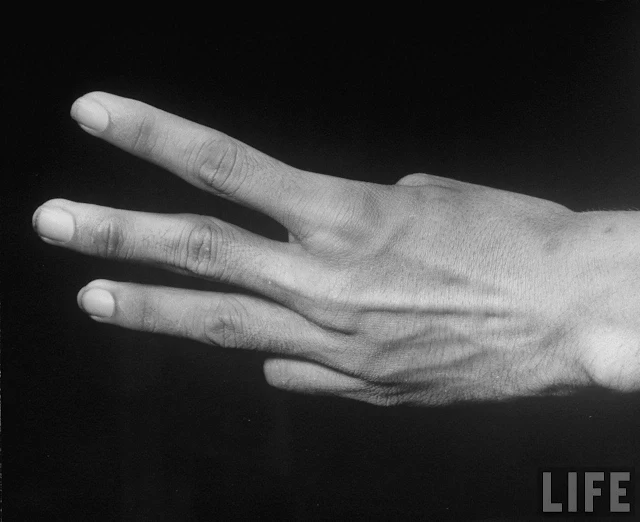Various Hand Signals Used in Bombay Stock Exchange - 1946
Source: Life Archive hosted by Google

Merchants doing the day's accounts, a familiar sight in every bazaar in the evening. They are wearing a brown or black cap, which is used widely by many people of their class & caste. Most business in all but the largest offices & cities is carried on from the squatting position, among tidy white mattresses & bolsters. Hours in the bazaar are long, starting sometimes as early as 8 in the morning and going on till 9 or 10 at night, with perhaps a siesta during the heat of midday. The man in the right is not of the merchant caste, but is a Brahmin (priestly class). His sacred thread, which only a Brahmin may wear can be seen round his shoulder.
Source: University of Hawaii at Manoa Library








